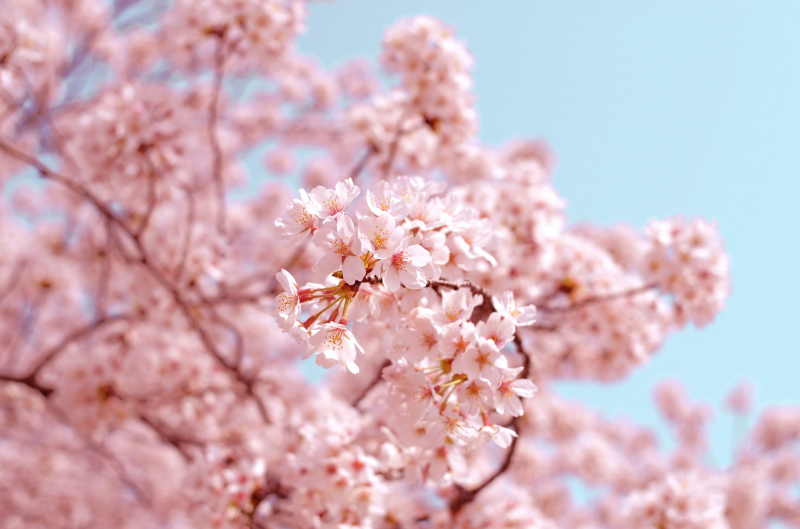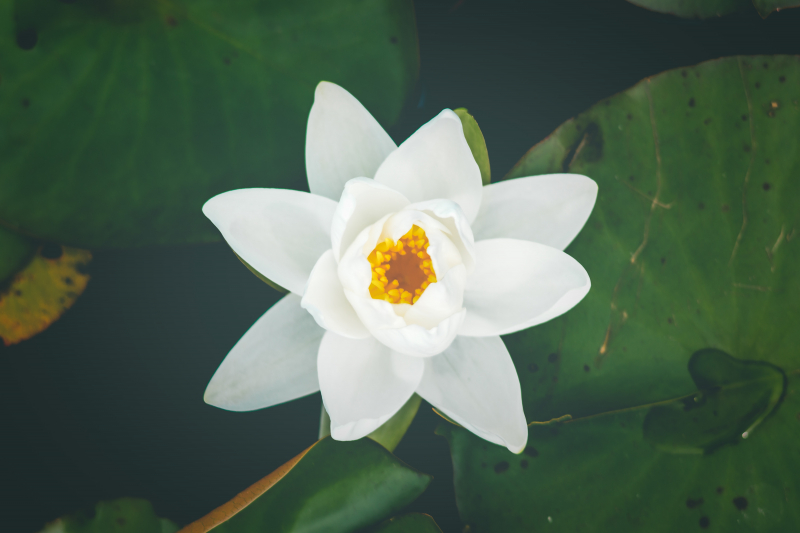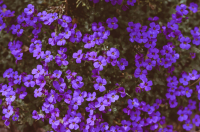The Botanical Garden is one of those wonderful places you go when you want to take a trip around the world but can’t. It boasts the fifth biggest collection of plants found everywhere from tropical rainforests to deserts. However, what makes this place truly amazing and different from other museums, is that its exposition changes every day (quite literally): plants are living things and there’s something fun going on all year round.
1. See winter-blooming camellias and citrus fruit in January
Though the Garden’s subtropical route is beautiful at any time of the year, January is one of the best months to check it out, as this is when Camellia japonica is in full bloom. Admire the sea of these delicate white, pink and crimson beauties, walk under the branches of citrus trees bowing under the weight of their tangy fruit, and learn about winter plants from all over the world.
2. Admire tulips, azaleas, and snowdrops in March
Bold scarlet and ivory-white, luminous pink and deep maroon, fiery tangerine-red and soft yellow, tulips boast a truly enormous variety of colors and textures and amaze people all over the world. Every year in March, the Botanical Garden hosts an exhibition of these exquisite flowers. In case you decide to give it a go, make sure to take a tour through the subtropical route to see a greenhouse full of azalea blossoms, as well as walk through the garden’s park to find the first snowdrops peeping through the snow.
3. Attend an exhibition of cacti and succulents in April
Exhibiting a wide range of sizes, shapes and leaf colors, cacti and succulents are certainly in vogue right now. They seem to be turning up everywhere, from fashion and decor to stationary and accessories design. To help you familiarize yourself with these extraterrestrial creatures, every year in the middle of April, the Botanical Garden organizes an exhibition featuring over 2,500 plants, from the tiny echeveria to the gigantic aloe. Take a tour through the Garden’s tropical route to learn more about these extraordinary plants and see all their varieties.
4. Marvel at cherry blossoms in May

Credit: AJ (@ajny) on Unsplash
The beginning of May is my favorite time in St. Petersburg, and it’s when cherry trees are in full bloom. Stroll under the sprawling foliage of cherry blossoms and experience a touch of Japan in Russia: master the art of ikebana, play traditional Japanese games, listen to Japanese music, and attend workshops and lectures on Japanese art and culture.
5. Awe at Queen of the Night Cactus in June
Every summer, the Botanical Garden announces the date when the famous Selenicereus macdonaldiae, commonly referred to as the Queen of the Night, will be blooming. A cactus species originating from the Antilles, Mexico, and Central America, the Queen of the Night looks like a dry stick most of the year, but once a year it slowly opens at dusk to a large palm-sized fragrant flower, which wilts within a few hours of sunrise.
6. See water-lilies in July and August
Summer is the best time to visit the less known route of the Garden, the water one. Elegant lotuses and huge vibrant water-lilies each bloom at their own time, so you’ll see different flowers when taking a tour through this route in the morning and in the evening.
7. Wander through the park all summer
Situated in the very heart of St. Petersburg on Petrogradskaya Storona, the Botanical Garden is a perfect place if you want to get a rest from the city’s hustle and bustle without actually leaving the city. Just wander the park’s curving paths, admire the flowers and the greenery, and get lost in the beauty of nature. Admission is free in winter and early spring, while in summer tickets cost 100 rubles.
8. Marvel at orchids in December

Credit: Ardi Evans (@ardievans) on Unsplash
Everyone loves orchids for their subtle, colorful and delicate beauty. Learn more about these unusual tropical plants at the Rainbow Shatters annual exhibition of orchids hosted by the Botanical Garden in December and the beginning of January.
9. Catch a cool exhibition
Every month, the Botanical Garden organizes exhibitions on various topics, from the Japanese art and the history of the Garden during WWII to the flora of the Arctic and tea drinks from different countries. The upcoming events include Poetry of Nature (April 2-14), an exhibition of botanical art, and Nature of Things (April 16-21), an exhibition of textiles and ceramics. Check out this webpage to learn more about the upcoming events (in Russian).
10. Purchase a plant in the garden’s small plant shop
Thinking about where to buy a house plant cheap? Try the Botanical Garden’s shop. Located at the end of the Subtropical route under the arch and open every weekend from midday to 5pm, it offers a good selection of house plants, from succulents to orchids, at relatively low prices. What sets this small shop apart from many other spots is that their plants are grown in the right soil and well cared after.
Useful information
- Location: the Garden is located on 2 Professora Popova Street (10 minutes walk from Petrogradskaya metro station);
- Opening hours: the park is open on Tuesday-Sunday from 10am to 6pm (tickets must be purchased before 4.30pm), tours to the greenhouses’ are held from 11am to 4.30pm;
- Admission fee: tickets to the greenhouses’ routes cost 300 rubles. If you just want to walk in the park, it will cost you 100 rubles;
- Useful tip: pay a visit to the Garden in the morning when there are not so many visitors and you won’t have to waste your time waiting in a queue.
Check out the Garden’s Instagram page for more info and beautiful pics of plants.



